
Roots
As twilight descends and the world quiets, a silent transformation begins for textured hair. Many of us consider the daytime regimen, the art of styling for public presentation, yet the hours of slumber hold an often-underestimated power over our strands. What occurs while we sleep can either reinforce our hair’s resilience or subtly, yet persistently, chip away at its strength.
This exploration begins not with a list of solutions, but with an invitation to understand the fundamental truths of textured hair and its nightly interaction with the world. We seek to peel back the layers, to grasp the very essence of why nighttime care is not merely an option, but a quiet, profound act of preservation.
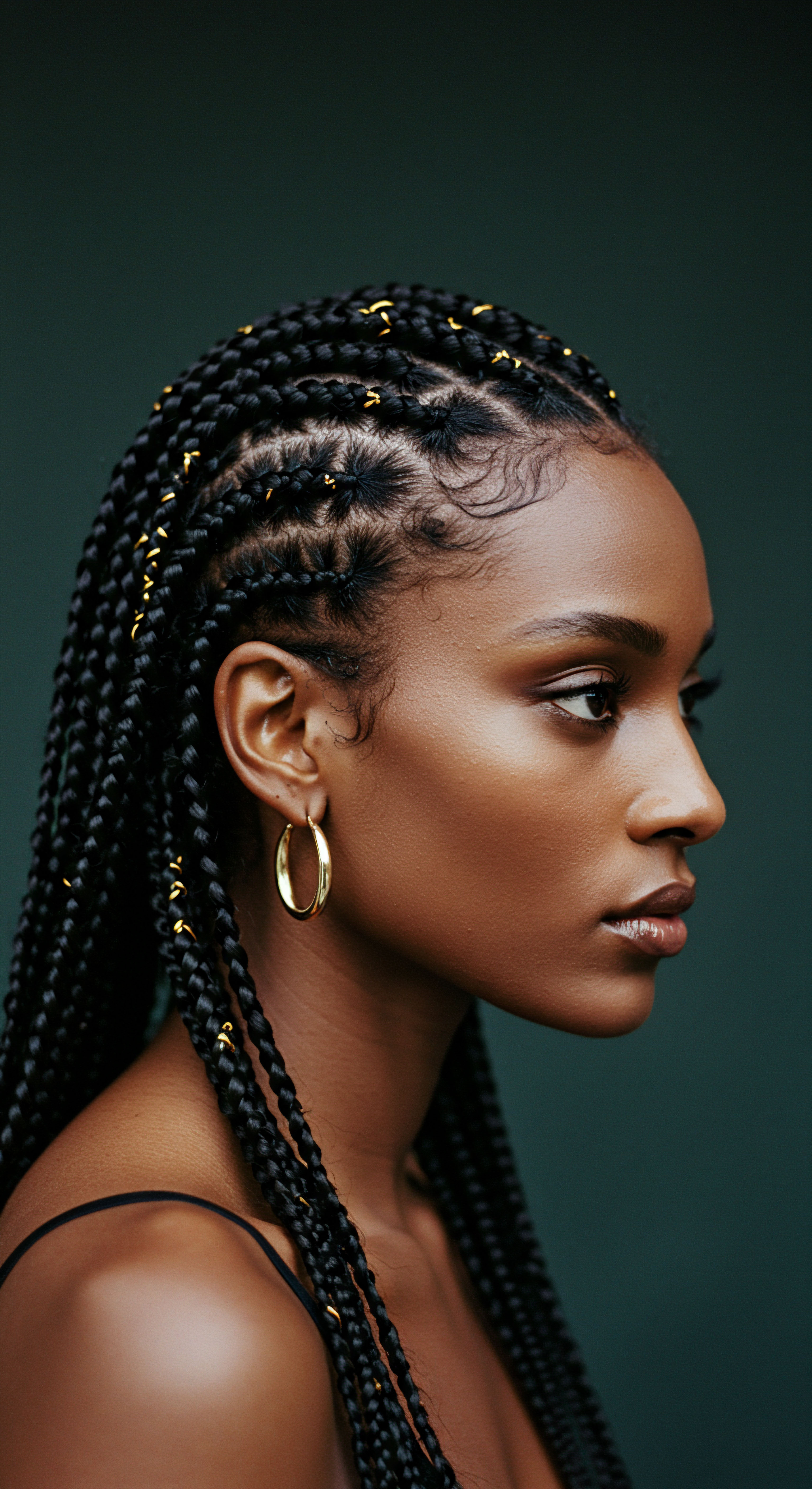
Understanding Textured Hair’s Unique Structure
Textured hair, a spectrum spanning from loose waves to tight coils and kinky spirals, possesses a distinct architecture that sets it apart. Unlike straight hair, which tends to have a more uniform, round cross-section, textured strands often exhibit an elliptical or flattened shape. This structural variation, coupled with the hair shaft’s natural bends and curves, creates points of vulnerability.
These curves, while beautiful, make it more challenging for the scalp’s natural oils, sebum, to travel evenly down the entire length of the hair strand. Consequently, textured hair frequently experiences a predisposition to dryness, particularly at the ends, which are the oldest and most exposed parts of the hair.
This inherent dryness is a critical consideration for nighttime care. When hair lacks sufficient moisture, its outer protective layer, the cuticle, can become raised or brittle. A raised cuticle is akin to a shingled roof with lifted tiles; it struggles to retain moisture, allowing water to escape readily, and it is more susceptible to external aggressions. This heightened porosity means that while textured hair can absorb moisture quickly, it can also lose it with equal swiftness, leading to a cycle of dryness and fragility.
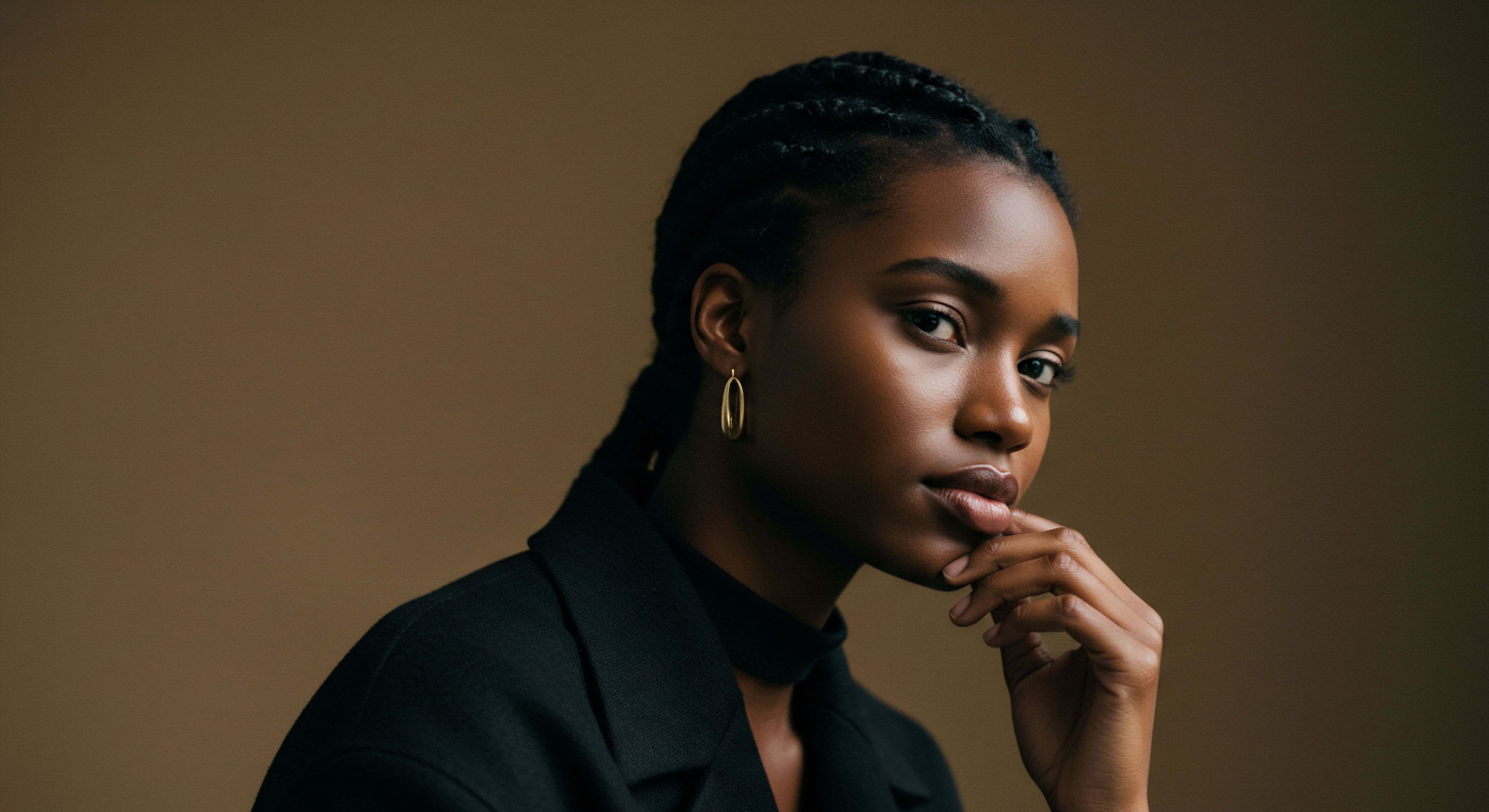
The Unseen Forces of Night ❉ Friction and Dehydration
During sleep, our hair, particularly textured hair, faces two primary antagonists ❉ mechanical friction and dehydration. As we shift and turn, our strands rub against pillowcases, clothing, and even other hair strands. This constant rubbing, even if seemingly gentle, can rough up the delicate cuticle layer, leading to tangles, frizz, and ultimately, breakage. A study on hair friction dynamics highlighted how friction from contact with various materials can wear down the hair cuticle, especially for wavy or curly hair, which has more points of contact.
The nightly dance of movement against common bedding materials can silently erode the cuticle of textured hair, leading to unwanted frizz and breakage.
Beyond friction, the absorbent nature of many common pillowcase materials, such as cotton, can actively draw moisture away from the hair as we sleep. This unwelcome exchange leaves textured hair drier and more brittle by morning, undoing the moisturizing efforts of the day. The consequence of this nightly assault is often visible ❉ flattened curls, increased frizz, and a disheartening amount of shed hair on the pillow. Understanding these fundamental challenges lays the groundwork for choosing protective strategies that truly serve the unique needs of textured hair.
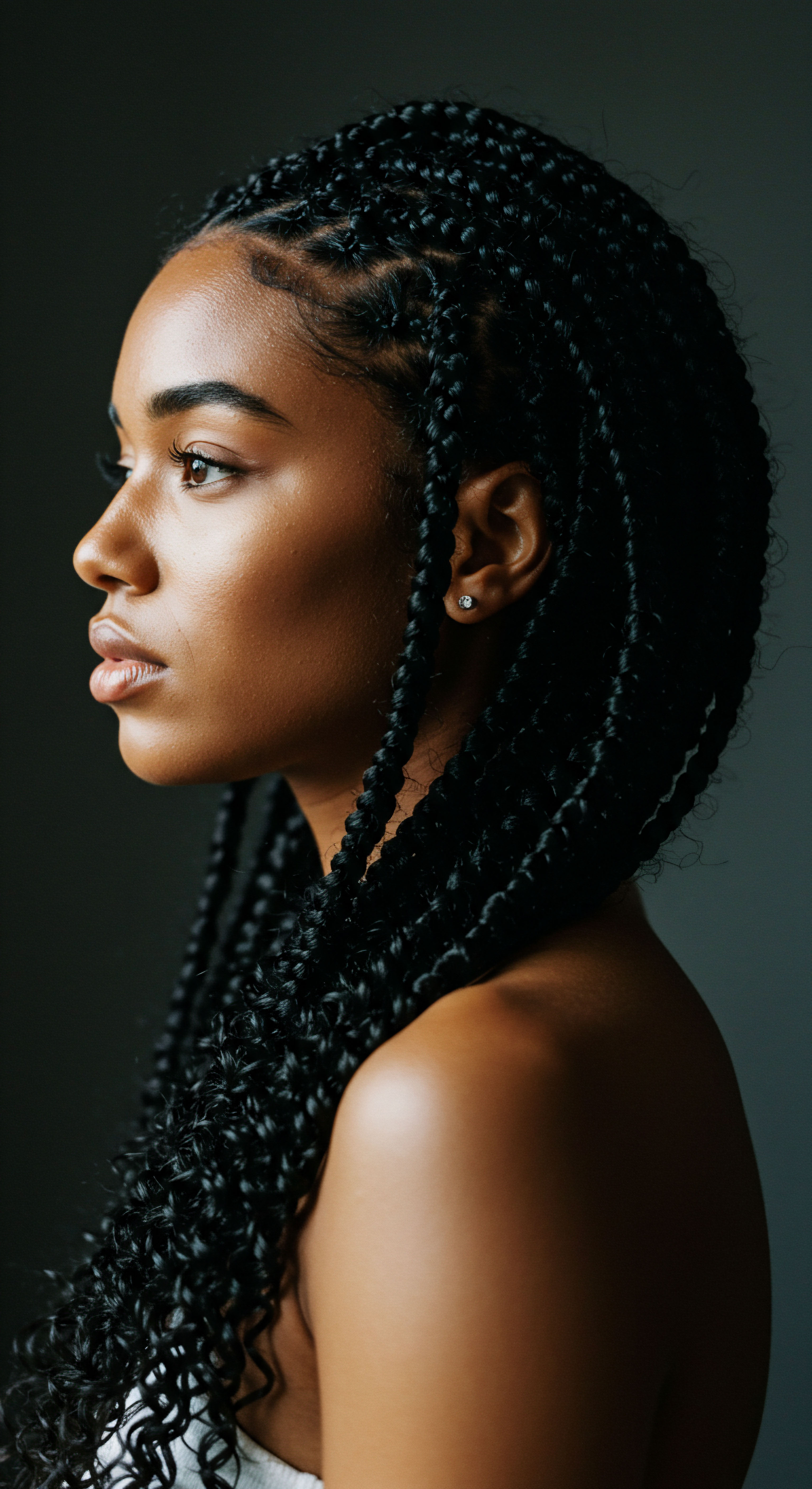
Ritual
With the sun dipping below the horizon, a different kind of preparation begins for textured hair. Moving beyond the theoretical understanding of its structure and vulnerabilities, we now turn to the practical wisdom that guides our nightly practices. This is where intention meets application, where conscious choices transform mere sleep into a period of genuine restoration for our strands. The focus shifts to active steps, gentle techniques, and the thoughtful selection of tools that shield textured hair from the rigors of night, allowing it to greet the morning with vibrancy and grace.

Why Nighttime Care Matters for Textured Hair
The hours we spend in slumber are not a pause in hair care, but rather a crucial chapter in its ongoing health. For textured hair, which is inherently prone to dryness and breakage, neglecting nighttime protection can exacerbate these challenges. The continuous rubbing against a standard pillowcase, often made of cotton, can create significant friction.
This friction can lead to tangles, knots, and a roughening of the hair cuticle, ultimately resulting in breakage and split ends. Moreover, cotton’s absorbent nature can wick away the precious moisture textured hair needs to thrive, leaving it dehydrated and prone to frizz by morning.
Proper nighttime care serves as a shield, minimizing these damaging effects. It helps to preserve moisture, reduce mechanical stress, and maintain the integrity of your chosen daytime style. This preservation means less manipulation in the morning, which in itself reduces the potential for breakage and saves valuable time. For individuals seeking to retain length, protecting the ends of the hair overnight is particularly significant, as these are the oldest and most vulnerable parts of the strand.

What Are the Best Protective Styles for Textured Hair at Night?
The selection of a nighttime protective style depends on several factors ❉ hair length, current style, and personal comfort. The overarching goal is to minimize friction, prevent tangling, and preserve moisture.
- Pineapple Method ❉ This simple, yet remarkably effective style is a favorite for those with medium to long textured hair. It involves loosely gathering all your hair to the very top of your head, near the crown, and securing it with a soft, satin or silk scrunchie. The aim is to create a loose bun or ponytail that sits high enough so that the ends of your hair are suspended and not crushed by your head or pillow. This position significantly reduces friction and helps to maintain curl definition, preventing the front and back of the hair from flattening.
- Loose Braids or Twists ❉ For those with shorter hair, or as an alternative to the pineapple, loose braids or two-strand twists offer excellent protection. These styles keep hair contained, reducing movement and rubbing against bedding. They also help to lock in moisture and can even stretch curls for a different look in the morning. It is crucial that these styles are not pulled tightly, as excessive tension can lead to breakage, particularly around the hairline, a condition known as traction alopecia. A loose braid or bun can keep hair more manageable and prevent rubbing against the pillowcase.
- Buns and Updos ❉ Low, loose buns or chignons can be effective, especially for longer hair, by tucking away the ends. The hair is twisted and then secured, minimizing tangles and protecting the oldest parts of the strands. Similar to braids, the key is to ensure the style is not tight, allowing for scalp comfort and preventing undue stress on the hair follicles.
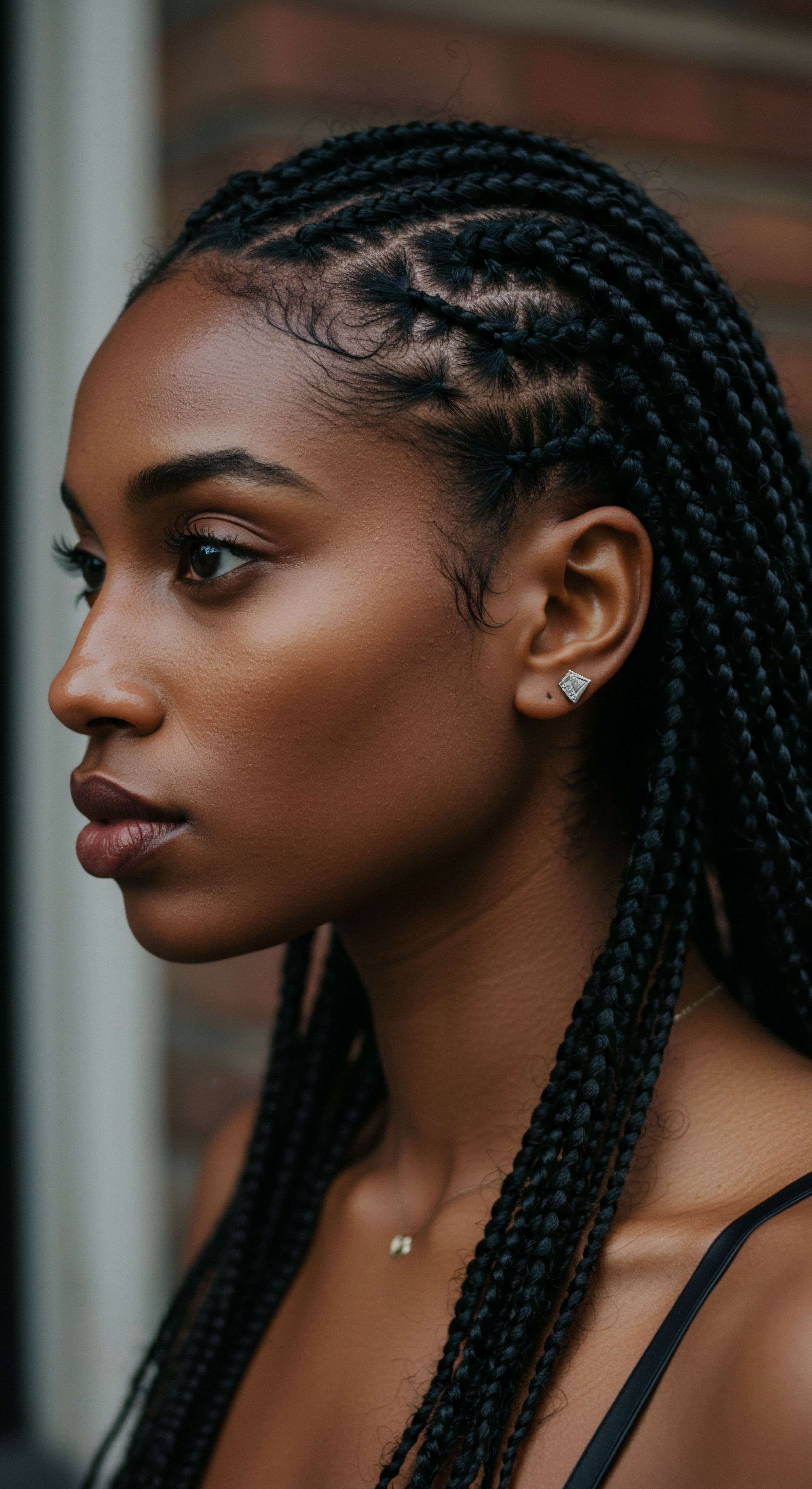
Choosing the Right Accessories ❉ More Than a Mere Fabric
The material that touches your hair during sleep holds substantial weight in its nightly well-being.
| Material Silk |
| Benefits for Textured Hair Reduces friction, retains moisture, minimizes frizz, smooth surface |
| Considerations Can be a higher investment, requires gentle care |
| Material Satin |
| Benefits for Textured Hair Reduces friction, helps retain moisture, less absorbent than cotton, more accessible alternative to silk |
| Considerations Synthetic, less breathable than silk, may not offer the same protein benefits as natural silk |
| Material Cotton |
| Benefits for Textured Hair Breathable, widely available, inexpensive |
| Considerations Highly absorbent, creates friction, can cause frizz, dryness, and breakage |
| Material Selecting the right material for your sleep accessories is a fundamental step in safeguarding textured hair. |
Silk and Satin Pillowcases are often hailed as guardians of textured hair for compelling reasons. Unlike the rough, absorbent fibers of cotton, silk and satin provide a smooth surface that allows hair to glide freely, reducing friction, tangles, and frizz. A study by Blissy found that a silk pillowcase creates 43% less friction than satin and cotton, which contributes to enhanced shine and reduced breakage.
This reduction in friction is particularly beneficial for textured hair, which is already more prone to breakage due to its unique structure. Furthermore, silk and satin are less absorbent than cotton, meaning they do not strip hair of its natural oils and applied moisture, helping to keep strands hydrated throughout the night.
Beyond pillowcases, Satin or Silk Bonnets and Headscarves serve as another layer of defense. These coverings enclose the hair completely, providing a comprehensive shield against friction and environmental dryness. They are especially useful for preserving intricate styles like braids or twists, ensuring they remain intact and defined until morning. The use of such coverings is a long-standing tradition within Black communities, often passed down through generations, signifying a collective wisdom around hair preservation and cultural identity.
From the pineapple method to silk coverings, intentional nighttime rituals offer a profound shield against the unseen stressors of sleep, preserving textured hair’s innate beauty.
When securing hair, opt for soft, fabric-covered ties like Satin or Silk Scrunchies instead of harsh elastic bands. Elastic bands can snag and cause breakage, leaving unsightly creases in the hair. The gentle embrace of a soft scrunchie secures the style without creating tension or damage.
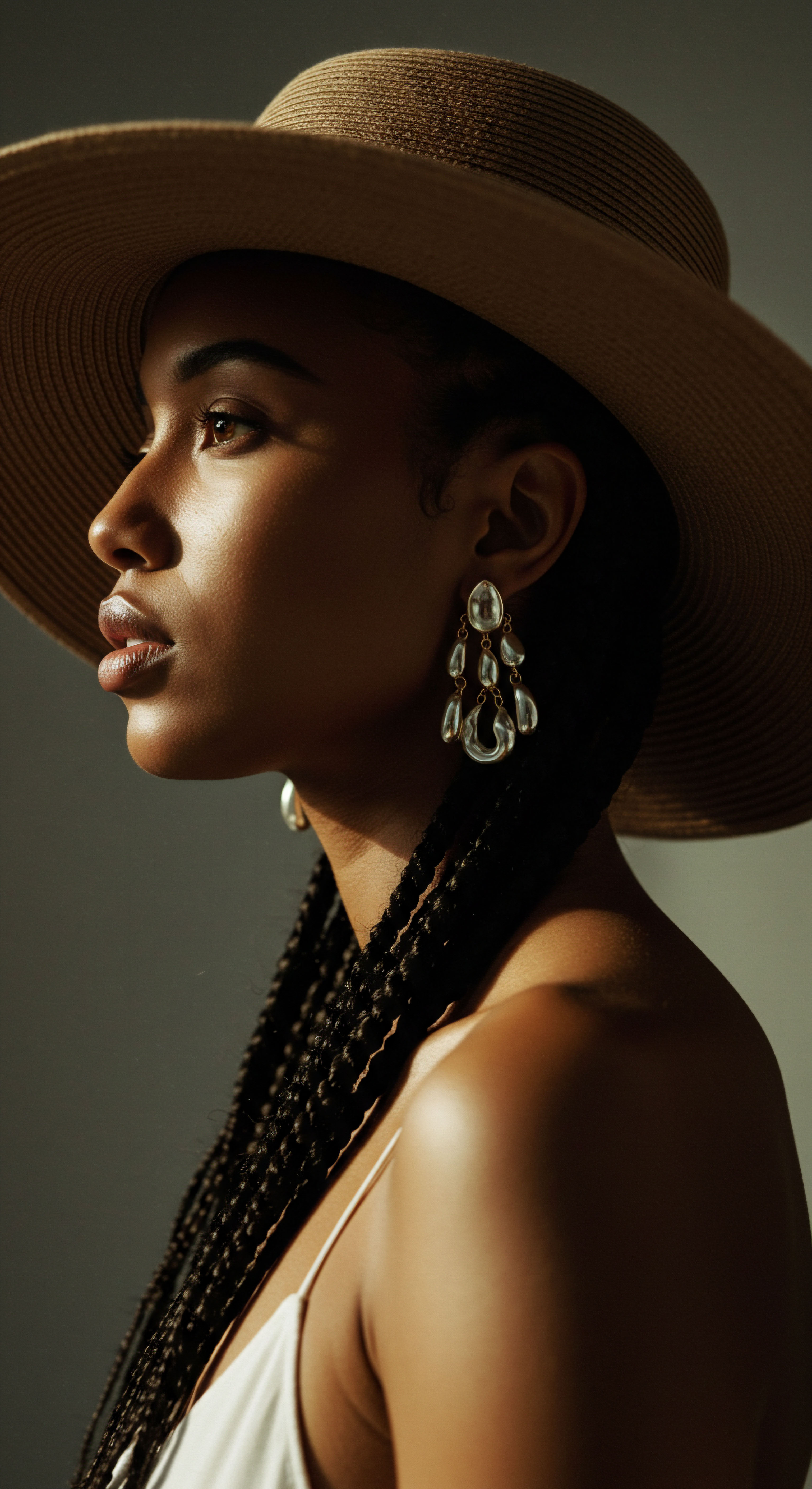
Relay
To truly comprehend the significance of nightly protective styles for textured hair, we must transcend simple recommendations and delve into the interwoven tapestry of science, cultural heritage, and the subtle yet profound impact of consistent care. This is a journey into the deeper mechanisms at play, examining not just what works, but why it works, and how these practices echo through generations, holding a mirror to identity and resilience. The complexities of textured hair demand a sophisticated lens, one that recognizes its biological nuances alongside its cultural weight.
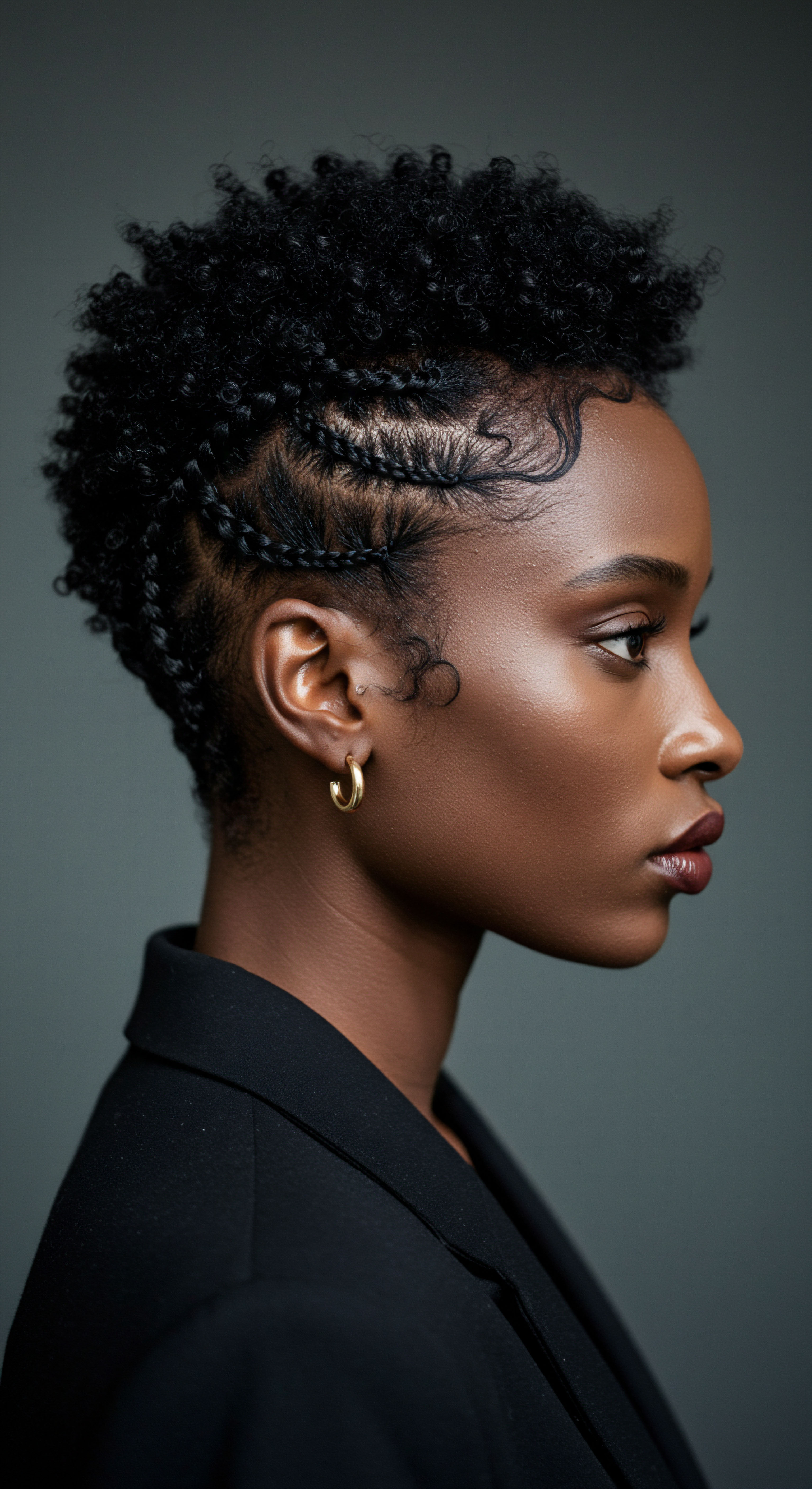
The Biomechanics of Sleep and Hair Integrity
The act of sleeping, seemingly passive, exerts measurable mechanical stress upon hair fibers. Research in tribology, the science of friction, has long highlighted how continuous rubbing can degrade material surfaces. For hair, this translates to cumulative damage at the cuticle level. A study by Schwartz and Knowles in 1963, though broad in its scope, established foundational principles of frictional effects on human hair, indicating that repeated contact can wear down the hair cuticle.
More recent work, such as that by Bhushan et al. in 2014, specifically examined the friction dynamics of straight, curly, and wavy hair, noting that curly and wavy hair, with its inherent structural undulations, presents more points of contact and is thus more prone to friction-induced damage.
Consider the typical sleep cycle, punctuated by tossing and turning. Each movement, each shift in head position, translates into microscopic abrasions on the hair shaft. For textured hair, characterized by its elliptical cross-section and often fewer cuticle layers compared to straight hair, this mechanical stress is particularly deleterious.
The raised or more open cuticles of high porosity textured hair, common in many curl patterns, are even more vulnerable to this abrasive action. The result is a compromised cuticle, leading to moisture loss, increased frizz, and ultimately, hair breakage.
A less commonly discussed aspect is the potential impact of sleep position on localized hair thinning or breakage. While sleeping on one side does not directly cause hair loss, consistent pressure and friction on a particular area can contribute to localized breakage over time, potentially leading to a perceived thinning or actual traction alopecia in extreme cases. One study suggests that individuals who consistently sleep on one side may experience more friction on that side, leading to sparser or shorter ends on that particular area of the scalp. This highlights the need for even distribution of pressure and friction reduction during sleep.
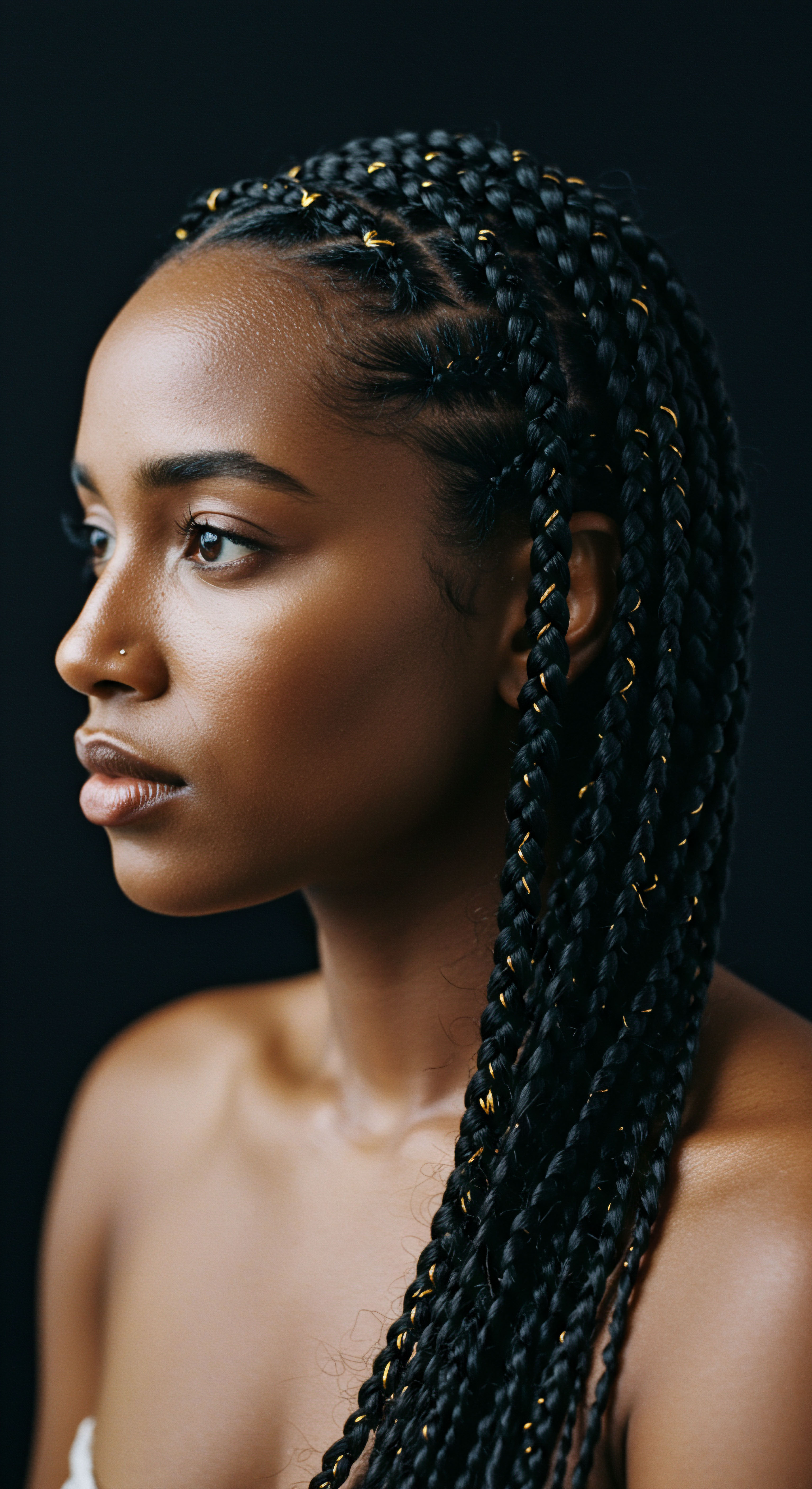
Cultural Resonance of Nighttime Hair Rituals
Beyond the biomechanical realities, the practice of protecting textured hair at night carries profound cultural weight, particularly within Black communities. This is not merely a modern beauty hack; it is a tradition deeply rooted in history, passed down through generations as a rite of passage and a practice of self-preservation.
Historically, Black hair has been a canvas of identity, status, and resistance. From ancient African tribes where intricate braids communicated social standing and marital status, to the use of braided patterns as escape maps during slavery, hair has always been more than just strands on a head. The nightly ritual of wrapping or braiding hair, often done with mothers or grandmothers, became a sacred space for intergenerational connection, shared wisdom, and a quiet act of defiance against societal pressures that often devalued Black hair.
Nighttime hair rituals for textured strands are a profound cultural practice, reflecting a deep historical lineage of care, resilience, and identity.
This cultural dimension adds a layer of meaning to protective styling. When a Black woman covers her hair at night, she is not only safeguarding her physical strands but also honoring a legacy of care, self-worth, and cultural pride. The bonnet or silk scarf becomes a symbol of nurturing, a quiet act of self-love that extends beyond the purely aesthetic.
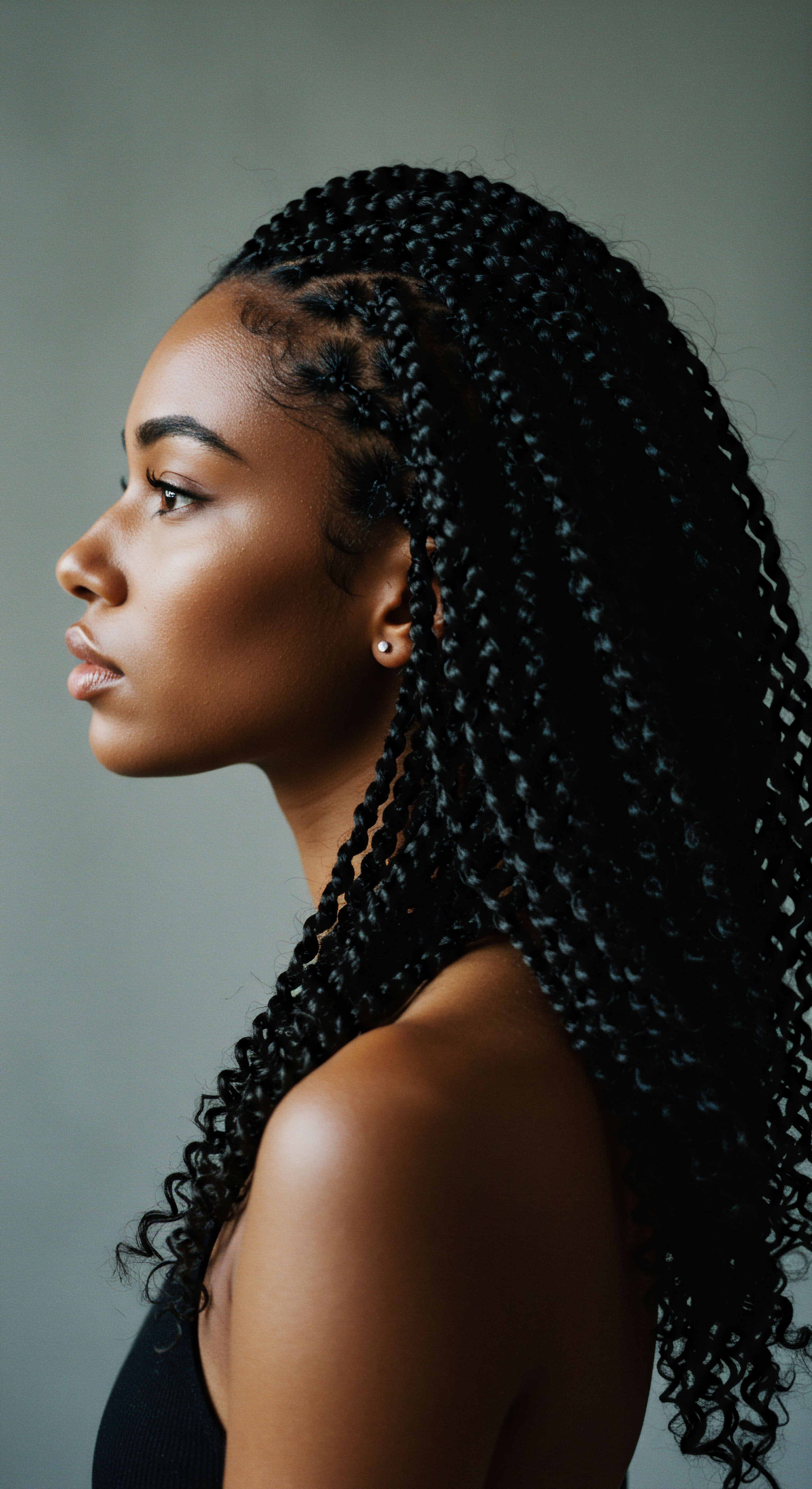
The Interplay of Porosity, Products, and Protection
Understanding hair porosity is paramount for optimizing nighttime protection. As previously discussed, high porosity hair, common in many textured types, readily absorbs and loses moisture due to its open cuticle. This characteristic means that while protective styles reduce external friction, the internal moisture balance still requires careful attention.
For high porosity hair, the focus shifts to sealing in moisture before styling for the night. This often involves a layered approach, such as the Liquid, Oil, Cream (LOC) method. A water-based leave-in conditioner provides hydration, followed by a lightweight oil to seal the cuticle, and finally, a cream to further lock in moisture. Applying these products before styling hair into braids, twists, or a pineapple can significantly enhance moisture retention, ensuring the hair remains supple and less prone to breakage throughout the night.
The choice of sleep accessory, whether a silk pillowcase or a satin bonnet, becomes a critical component of this moisture retention strategy. Cotton, with its absorbent nature, can strip hair of these carefully applied products and natural oils. In contrast, the smooth surface of silk or satin minimizes this absorption, allowing the hair to retain its hydration and the benefits of the products applied.
Moreover, the frequency of washing textured hair, especially for those with high porosity, also plays a role in its nightly health. Over-washing can strip the scalp and hair of natural oils, leading to dryness. Finding a balanced wash routine that allows for regular cleansing without excessive stripping is crucial for maintaining the hair’s natural moisture barrier, which then benefits from protective styling at night.
A less recognized truth ❉ the consistent friction from standard pillowcases can lead to localized hair thinning over time, underscoring the critical need for gentle sleep surfaces.
The impact of sleep position on hair health, while often overlooked, is a subtle yet compelling data point. A study on the effects of sleep position on hair damage notes that side or stomach sleepers often experience more friction and crushing of hair against the pillow, potentially leading to frizz, tangles, and breakage at the crown or ends. Conversely, back sleepers tend to experience less damage as their hair is not pressed as directly against the pillow.
While changing one’s preferred sleep position can be challenging, awareness of this biomechanical stress reinforces the value of silk pillowcases or bonnets, which mitigate friction regardless of sleep posture. This insight highlights a deeper layer of vulnerability for textured hair, which is already more prone to breakage due to its structural characteristics.

Reflection
As our exploration draws to a close, we are left with a deeper appreciation for the quiet hours of the night and their profound influence on textured hair. What began as a query into practical styles has unfolded into a multifaceted understanding, where the delicate science of the hair shaft meets the enduring strength of cultural heritage. The choices we make as the day fades, from the gentle gathering of strands to the silken touch of a pillowcase, are not mere routines.
They are acts of mindful preservation, whispers of ancestral wisdom, and affirmations of beauty. Each twist, each covering, each conscious decision to protect, contributes to a story of resilience and radiant health, allowing textured hair to greet each new dawn not just intact, but truly revitalized.
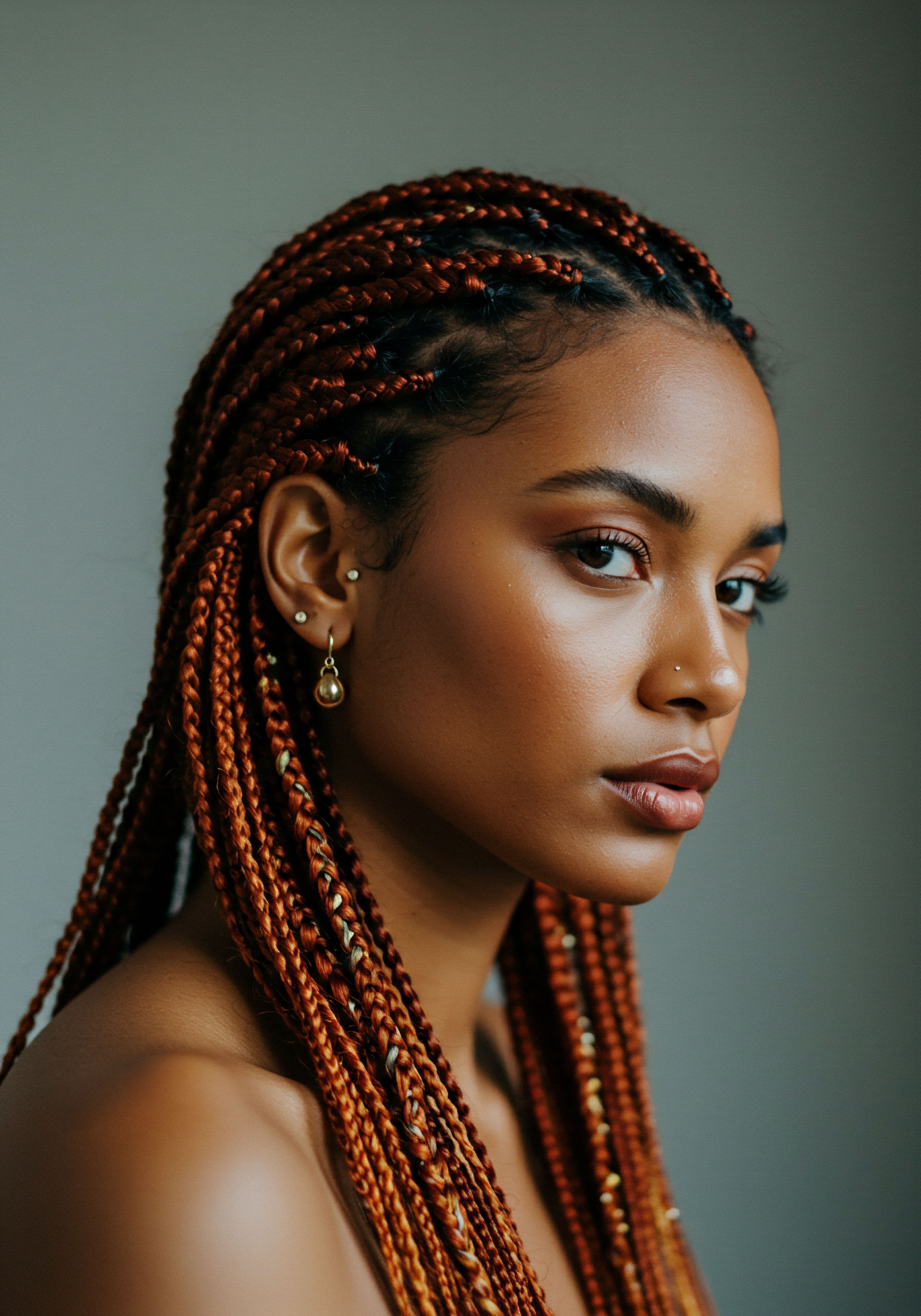
References
- 1. HairKnowHow.Com. High Porosity Hair ❉ What It Means For Your Hair.
- 2. British Association of Dermatologists Patient Hub. Caring for Afro-textured hair.
- 3. Healthline. How to Sleep with Curly Hair ❉ 5 Tips and Tricks. Published 2020 Jun 11.
- 4. Davines. Protect Your Tresses ❉ The Importance of Protective Hairstyles.
- 5. Be Inspired Salon. How to Protect Your Hair While Sleeping.
- 6. Silkie. The Link Between Sleep Position and Hair Damage ❉ What You Need to Know.
- 7. Black Skin Directory. Common types of hair loss experienced by black women. Published 2025 Feb 21.
- 8. Tha Guru. Moisture Retention for Healthy Hair (Printable).
- 9. Dr. Terziler. Does Sleeping on Only One Side Cause Hair Loss?
- 10. Pattern Beauty. Sleeping With Curly Hair ❉ 7 Tips For Preserving Curls Overnight. Published 2022 Feb 7.
- 11. Hair Made Easi. Why Wearing Protective Hairstyles to Bed is a Game-Changer. Published 2024 Mar 21.
- 12. Whiz Laboratories. Protective Haircare Benefits and Hair Style Maintenance Tips. Published 2023 Dec 18.
- 13. Sally Beauty. Textured Hair Health ❉ Scalp Care For Curly Hair. Published 2023 Dec 1.
- 14. Byrdie. How to Avoid Damaging Your Hair While Wearing Protective Styles. Published 2024 Jun 5.
- 15. Esteworld. Does Sleeping on Only One Side Cause Hair Loss?
- 16. Sleep.com. How a Hair Wrap Routine Protects More Than Just My Hair. Published 2021 Sep 3.
- 17. Dlova, N.C. et al. Black women’s hair ❉ the main scalp dermatoses and aesthetic practices in women of African ethnicity. PMC.
- 18. Pattern Beauty. High Porosity Hair Care 101 ❉ A Complete Guide For Natural Textures. Published 2025 Jan 11.
- 19. Mielle Organics. 10 Protective Styles for Natural Hair. Published 2025 Feb 5.
- 20. Aglow Dermatology. Hair loss in African Americans.
- 21. Katherine Haircare. Protective Styles Are the Most Underrated Hair Growth Secret. Published 2023 Jan 27.
- 22. Wella Blog. How to Repair Damaged Hair Overnight. Published 2024 Oct 22.
- 23. Curl Maven. How I Protect my Curly Hair at Night.
- 24. I Love Riccio. How not to damage curly hair at night.
- 25. Miteva, M. & Tosti, A. Hair Breakage in Patients of African Descent ❉ Role of Dermoscopy. PMC.
- 26. Slipssy. Slipssy’s First-Night Effect ❉ How Reducing Friction Transforms Your Hair Overnight. Published 2025 Apr 16.
- 27. Esme Luxury. Is Wrapping Your Hair at Night Good? Published 2024 Dec 3.
- 28. The Zoe Report. The Silk Bonnet’s History Is Rooted In Black Beauty Rituals. Published 2024 Feb 26.
- 29. MDhair. Hair loss in black women. Published 2025 Mar 11.
- 30. Emily’s Pillow. What is the difference between silk pillowcase and cotton pillowcase? Published 2024 Nov 5.
- 31. Salon Blue. Everything You Need to Know About Protective Styles & Scalp Care Regimen to Maximize Hair Health. Published 2023 Jun 2.
- 32. L’Oréal Paris. Protective Hairstyles For Natural Hair.
- 33. Kazidomi. Textured hair ❉ understanding, caring for, and enhancing your curls. Published 2024 Sep 25.
- 34. Dtex Homes. Which Pillowcase Is Better for Your Hair? Published 2025 Apr 19.
- 35. Dr. Serkan Aygin. Low vs. High Porosity Hair ❉ Key Differences & Hair Care. Published 2025 Apr 13.
- 36. Stylist. All About Afro ❉ unravelling the culture behind African hair braiding.
- 37. Blissy. Satin vs Silk Pillowcase ❉ Pros & Cons for Skin, Hair, Sleep. Published 2025 Apr 29.
- 38. Healthline. How to Sleep with Long Hair to Protect the Health of Your Hair. Published 2021 Sep 6.
- 39. Rolling Out. 5 beautiful Black beauty rituals across generations. Published 2025 May 11.
- 40. YouTube. How your sleep affects your hair growth! Published 2018 May 10.
- 41. Wikipedia. Protective hairstyle.
- 42. Byrdie. Satin vs. Silk Pillowcases for Hair ❉ What’s the Difference? Published 2025 Feb 28.
- 43. Hairlust. Bamboo vs. Silk Pillowcase ❉ 4 Reasons You Should Pick Bamboo.
- 44. Reddit. I am interested in protective hairstyles suited to my hair, and how people historically would have done it. Published 2024 Sep 17.
- 45. MonCornerB. Hair porosity ❉ how to identify it and adapt your hair routine.
- 46. Refinery29. Braids, Wigs, & Wash Day Routines ❉ 4 Black Women On The Meaning Behind Their Hair Rituals. Published 2022 Jun 29.
- 47. Royaltee Magazine. Braids, Plaits, Locs ❉ The History of Black Protective Hairstyles. Published 2021 Feb 17.
- 48. Flora & Curl. The History of Black Hairstyles.